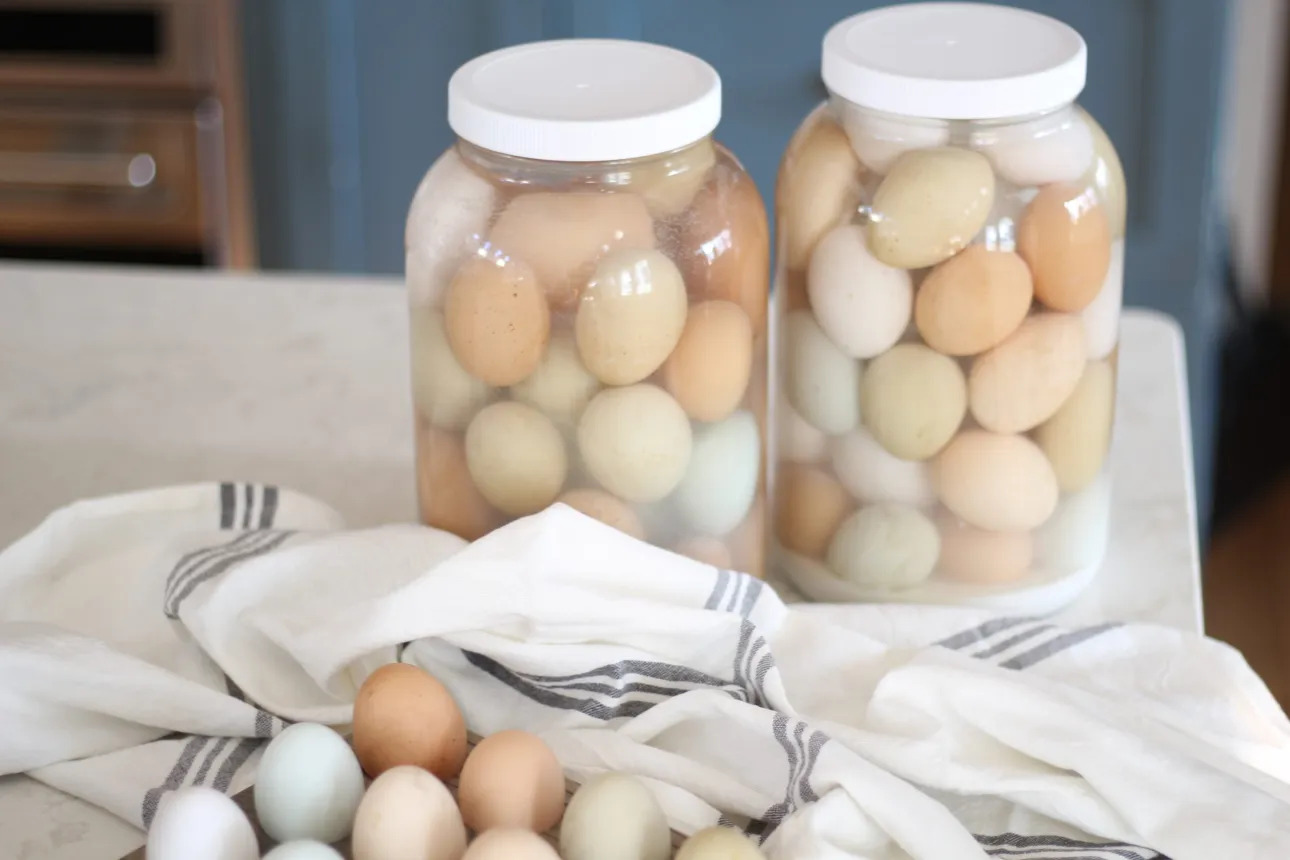

Articles
How To Store Fresh Bread
Modified: October 20, 2024
Learn the best methods to store fresh bread and keep it fresh for longer. Read our informative articles to find out the proper techniques and tips.
(Many of the links in this article redirect to a specific reviewed product. Your purchase of these products through affiliate links helps to generate commission for Storables.com, at no extra cost. Learn more)
Introduction
Welcome to the world of fresh bread! There’s nothing quite like the aroma of a warm loaf straight out of the oven or the delightful crunch of a crust that crackles beneath your fingers. But once you’ve enjoyed that first slice, how do you ensure that the rest of the loaf stays as fresh as possible? Proper bread storage is the key to preserving the flavor, texture, and shelf life of your favorite bread.
Whether you’ve just baked it yourself or bought it from a local bakery, knowing how to store fresh bread is essential to maintain its quality. The way you handle and store your bread can make all the difference between a soft, moist loaf and a dry, stale disappointment. In this article, we will explore the importance of proper bread storage and discuss various methods to keep your bread fresh for longer.
Proper storage not only preserves the taste and texture of your bread but also prevents mold growth and reduces waste. By following some simple guidelines, you can ensure that every slice you enjoy is as delicious as the first.
Tip: Before storing your bread, make sure it has completely cooled down. If you store it while still warm, condensation may form inside the container and make the bread soggy.
Key Takeaways:
- Proper bread storage is crucial for preserving freshness, preventing mold growth, and reducing food waste. Follow general guidelines and choose the right method to keep your bread fresh and flavorful.
- Extend the shelf life of your bread by slicing as needed, avoiding excessive handling, and considering bread storage accessories. With these tips, you can maximize freshness and minimize waste.
Read more: How To Store Fresh Pretzels
Why Proper Bread Storage is Important
Proper bread storage is crucial because it can significantly affect the taste, texture, and shelf life of your bread. Here are a few reasons why it is essential:
Preserves Freshness: Fresh bread has a delicate balance of moisture and air. When exposed to the elements, bread can quickly become dry, tough, or stale. By storing it properly, you can slow down the staling process and preserve its freshness for longer.
Prevents Mold Growth: Moisture is the enemy when it comes to bread storage. If bread is not stored in a suitable environment, it can quickly attract mold and become unsafe to eat. Proper storage methods help minimize moisture and keep your bread mold-free.
Reduces Food Waste: According to research, a significant amount of bread is wasted each year due to improper storage. By learning how to store your bread correctly, you can extend its shelf life and reduce food waste, saving money and resources.
Maintains Texture: Good bread storage methods can help retain the desired texture of your loaf. Whether you prefer a soft, crusty, or chewy bread, proper storage ensures that the texture remains intact, allowing you to enjoy your bread as it was intended.
Enhances Flavor: The flavor of bread can also be affected by improper storage. Exposure to air and fluctuating temperatures can make bread taste bland or develop off-flavors. By storing bread correctly, you can preserve the original flavors and enjoy the full taste experience.
Tip: Keep in mind that different types of bread may require specific storage methods. For example, crusty breads like baguettes may need different storage conditions than fluffy sandwich bread. Always consider the characteristics of the bread you are storing when choosing a storage method.
General Guidelines for Storing Fresh Bread
While specific bread types may have their unique storage requirements, there are some general guidelines that can help you keep your bread fresh for longer. Here are a few tips to follow:
- Keep it at room temperature: Most bread is best stored at room temperature. Avoid exposing it to direct sunlight, heat sources, or excessive humidity, as these can accelerate staling and mold growth.
- Choose the right container: Bread should be stored in a breathable container that allows for some airflow. Avoid using airtight containers or plastic bags, as they can trap moisture and lead to a soggy loaf or mold growth.
- Wrap it properly: To prevent your bread from drying out, wrap it loosely in a clean kitchen towel or wax paper. These materials allow for some airflow while protecting the bread from dust and debris.
- Avoid refrigeration: Contrary to popular belief, refrigerating bread is not recommended for most types. Cold temperatures can accelerate staling and promote moisture buildup, resulting in a stale and rubbery texture.
- Use a bread box: If you have a bread box, it can be an excellent storage solution. Bread boxes provide a slightly humid environment that helps keep bread fresh longer by retaining moisture without causing excessive condensation.
- Consume within a few days: While proper storage methods can extend the shelf life of your bread, it is still best to consume it within a few days for optimal taste and quality. Fresher bread generally tastes better.
Tip: If you find that your bread becomes stale quickly, consider buying smaller loaves or slicing the bread and freezing individual portions for later use.
By following these general guidelines, you can keep your bread fresh and tasty for more extended periods, reducing waste and ensuring that every slice is a delight to savor.
Different Methods for Storing Fresh Bread
When it comes to storing fresh bread, there are several methods you can choose from, depending on your preference and the type of bread you have. Here are four popular methods:
-
Wrapping in Plastic or Bread Bags
Wrapping your bread in plastic or using bread bags is a simple and convenient method. This method helps retain moisture and prevents the bread from drying out too quickly.
When using plastic, ensure the bread has cooled completely to prevent condensation. Avoid using airtight bags, as they can cause moisture buildup or create a stale environment. Instead, opt for loosely wrapping the bread in a plastic bag, allowing some airflow.
This method is ideal for bread that you plan to consume within a day or two.
-
Read more: How To Store Fresh French Bread
Using a Bread Box
A bread box is a classic and aesthetically pleasing option for bread storage. It provides a slightly humid environment that helps maintain moisture without causing excessive condensation.
Place your bread in the bread box, ensuring that it is completely cooled. The box should be kept in a dry and cool area, away from direct sunlight or heat.
A bread box is suitable for various bread types, especially crusty bread like baguettes or artisan loaves.
-
Storing in a Paper Bag
If you prefer a more natural option, storing bread in a paper bag can be a great choice. Paper bags allow for airflow while protecting the bread from dust and debris.
Place your bread in a paper bag, gently folding the top to close it. Avoid using plastic liners inside the bag, as they can cause moisture buildup.
Storing bread in a paper bag is suitable for bread that needs to maintain a soft or slightly crusty texture, such as sandwich bread or rolls.
-
Freezing Fresh Bread
If you have more bread than you can consume within a few days, freezing is an excellent option to extend its shelf life.
Before freezing, make sure your bread is completely cooled. Wrap it tightly in plastic wrap, followed by a layer of aluminum foil or place it in a freezer-safe bag.
To thaw the bread, remove it from the freezer and let it come to room temperature or use the defrost function of your microwave. Alternatively, you can toast frozen slices directly.
Freezing bread is suitable for all types, including loaves, bagels, and buns.
Tip: When storing bread in any method, always check for signs of mold or spoilage before consuming. Discard any bread that appears moldy or has an off odor.
By choosing the appropriate storage method, you can keep your bread fresh, flavorful, and ready to enjoy whenever you’re in the mood for a delicious slice.
Tips for Extending the Shelf Life of Fresh Bread
Want to keep your bread fresh for even longer? Here are some additional tips to help extend its shelf life:
- Slice as needed: To prevent the entire loaf from going stale, slice off only what you plan to eat. This way, the remaining loaf stays untouched and fresh until you’re ready to enjoy more.
- Avoid excessive handling: The more you handle bread, the more moisture and oils from your hands can be transferred, which can lead to faster spoilage. Use clean utensils or tongs to handle bread whenever possible.
- Store in a cool location: Keep your bread away from heat sources, as higher temperatures can speed up the staling process. Choose a cool spot in your kitchen or pantry for optimal storage.
- Reheat stale bread: If your bread has gone slightly stale, don’t fret! You can bring it back to life by reheating it. Place the bread in an oven preheated to 350°F (175°C) for a few minutes until it is warmed through and crisp again.
- Make breadcrumbs or croutons: Don’t let leftover bread go to waste. If your bread has become too stale to enjoy, use it to make breadcrumbs or croutons. Simply cube or grate the bread, drizzle with butter or oil, season as desired, and bake until golden and crispy.
- Consider bread storage accessories: There are various bread storage accessories available, such as bread bins, bread bags with air vents, or bread storage containers with adjustable airflow. These tools can help maintain the freshness of your bread for longer periods.
- Avoid storing bread near strong odors: Bread can absorb odors from its surroundings, which can impact its taste. Keep your bread away from strong-smelling foods like onions, garlic, or spices.
By implementing these tips, you can maximize the shelf life of your bread, reducing waste and ensuring that each slice is as fresh as the first.
Store fresh bread in a paper bag or bread box at room temperature for up to 2-3 days. For longer storage, freeze the bread in a resealable plastic bag for up to 3 months.
Read more: How To Store Homemade Bread For Freshness
Conclusion
Proper bread storage is essential for maintaining the freshness, flavor, and texture of your favorite loaves. By following the general guidelines and exploring the different methods discussed in this article, you can ensure that your bread stays delicious and enjoyable for as long as possible.
Remember to choose the right storage method based on the type of bread you have, whether it’s wrapping in plastic or bread bags, using a bread box, storing in a paper bag, or freezing. Each method has its advantages and is suitable for various bread textures and varieties.
Additionally, incorporating the tips to extend the shelf life of your bread can further prolong its freshness. From slicing as needed to reheating stale bread or making breadcrumbs, there are plenty of practical ways to make the most out of your bread and reduce waste.
So, the next time you bring a loaf of bread home from the bakery or bake one yourself, remember to store it properly and utilize the tips provided here. Your bread will stay fresh, flavorful, and ready to delight your taste buds with every bite.
Enjoy the experience of savoring fresh bread, knowing that you have mastered the art of proper bread storage!
Frequently Asked Questions about How To Store Fresh Bread
Was this page helpful?
At Storables.com, we guarantee accurate and reliable information. Our content, validated by Expert Board Contributors, is crafted following stringent Editorial Policies. We're committed to providing you with well-researched, expert-backed insights for all your informational needs.














0 thoughts on “How To Store Fresh Bread”